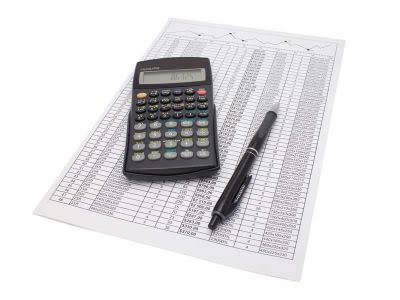Contribution Margin Ratio Revenue After Variable Costs
Content
- Contribution Per Unit Example
- How to Find the Gross Profit Percentage That Shows a Relationship to Revenue
- About the Contribution Margin Ratio
- How to actively improve your business contribution margin
- Contribution Margin Formula
- What Qualifies as General & Administrative Expenses in Sales?
- Contribution Margin Meaning
- Increase Sales

There actually are many different break-even points, because the profit equation has two unknown variables, Qr and Qs. It’s important to look at Net Sales, which includes refunds, discounts, returns, and other allowances. Offering coupon codes, bundle discounts, and other marketing offers will lower your average selling price and need to be included in this calculation. The concept of this equation relies on the difference between fixed and variable costs. Fixed costs are production costs that remain the same as production efforts increase.
For example, if you sell grill accessories, you might want to add certain items such as grill brushes or cleaning materials. FREE INVESTMENT BANKING COURSELearn the foundation of Investment banking, financial modeling, valuations and more.
Contribution Per Unit Example
Contribution margin is the revenue that is generated beyond what is necessary to cover the variable costs of production, such as materials and non-salaried labor costs. It can also include the firm’s profit if the amount exceeds the total amount of the fixed costs. Whatever is left after you have cleared all of your fixed costs is your company’s net income or net profit. Let’s say Contribution Margin Ratio you have fixed costs of $50,000 for rent, $35,000 for insurance and $20,000 for your property taxes. Because your contribution margin is $150,000, you are capable of covering your fixed costs and still making a tidy $45,000 profit at the end of the year. One of the important pieces of this break-even analysis is the contribution margin, also called dollar contribution per unit.

The 60% CM ratio means that the contribution margin for each dollar of revenue generated is $0.60. Furthermore, to perform a more detailed analysis on either a quarterly or year-over-year basis – or comparisons to comparable companies in the same industry – the CM can be divided by revenue to get to the CM ratio.
How to Find the Gross Profit Percentage That Shows a Relationship to Revenue
Using the above information the contribution margin per unit is $14 (the selling price of $20 minus the variable manufacturing costs of $4 and variable SG&A expenses of $2). Therefore, the contribution margin ratio is 70% (the contribution margin per unit of $14 divided by the selling price of $20). This contribution margin ratio tells us that 70% of the sales revenues (or 70% of the selling price) is available to cover the company’s $31,000 of monthly fixed costs and fixed expenses ($18,000 + $12,000 + $1,000).
This tells you that each bottled drink the company produces and sells contributes 50 cents toward covering fixed costs and generating a profit. Fixed costs are those that remain the same regardless of your sales volume. Examples include rent, fixed salaries and wages, property taxes and utilities. In general, the lower your fixed costs, the lower your break-even point. Variable costs, however, increase when sales rise and decrease when sales fall. Examples of variable costs are commissions and wages tied to sales volume, costs to buy products and materials used to make products. In other words, contribution margin per unit is the amount of money that each unit of your product generates to pay for the fixed cost.
- The key to using the formula above is to find only the revenue that comes from sales of a specific product or product line, along with that product’s specific variable costs.
- The contribution margin is a measurement through which we understand how much a company’s net sales will contribute to the fixed expenses and the net profit after covering the variable expenses.
- Now, this situation can change when your level of production increases.
- So, we deduct the total variable expenses from the net sales while calculating the contribution.
These costs may be higher because technology is often more expensive when it is new than it will be in the future, when it is easier and more cost effective to produce and also more accessible. A good example of the change in cost of a new technological innovation over time is the personal computer, which was very expensive when it was first developed but has decreased in cost significantly since that time. The same will likely happen over time with the cost of creating and using driverless transportation.
About the Contribution Margin Ratio
This document/information does not constitute, and should not be considered a substitute for, legal or financial advice. Each financial situation is different, the advice provided is intended to be general. Please contact your financial or legal advisors for information specific to your situation. Accordingly, the per-unit cost of manufacturing a single packet of bread https://www.bookstime.com/ consisting of 10 pieces each would be as follows. One common area of misunderstanding is related to the difference between the CM and the gross margin . Legal and other matters referred to in this article are of a general nature only and are based on Deputy’s interpretation of laws existing at the time and should not be relied on in place of professional advice.
How do you increase contribution margin ratio?
- Reducing your cost of goods sold.
- Reducing your labor cost.
- Optimizing your pricing for the maximum profit supported by the market.
A higher margin or ratio means your business has more money available to cover overhead costs and other expenses. On the other hand, contribution margin can show the profitability of one individual product or service. This is because fee-for-service hospitals have a positive contribution margin for almost all elective cases mostly due to a large percentage of OR costs being fixed. For USA hospitals not on a fixed annual budget, contribution margin per OR hour averages one to two thousand USD per OR hour.
How to actively improve your business contribution margin
Thus, the contribution margin ratio expresses the relationship between the change in your sales volume and profit. So, it is an important financial ratio to examine the effectiveness of your business operations. Now, this situation can change when your level of production increases. As mentioned above, the per unit variable cost decreases with the increase in the level of production.

Now that we’ve overviewed the basics of contribution margin ratio, it’s time to get calculating on your own. Using the aforementioned formula, find your contribution margin and then divide it by the sales income of an individual product to yield your contribution margin ratio.
Contribution Margin Formula
Management will use the contribution margin to understand what price they should charge for a product at the very least, in order to not lose money. The breakeven price should define a lower boundary for the price of a product. Anything higher than the breakeven price leads to a positive contribution margin. The contribution margins in different product lines and departments will also help the management figure out which product lines and departments are profitable and which ones should be scrapped. Variable costs are those expenses that increase and decrease with the production volume. They are also known as direct costs, and can be directly traced to the production process.
What is contribution margin ratio formula?
OR. Contribution Margin = Fixed Costs + Net Income. To determine the ratio: Contribution Margin Ratio = (Net Sales Revenue -Variable Costs ) / (Sales Revenue)
Conceptually, the contribution margin ratio reveals essential information about a manager’s ability to control costs. The contribution margin may also be expressed as a percentage of sales. When the contribution margin is expressed as a percentage of sales, it is called the contribution margin ratio or profit-volume ratio (P/V ratio). You can calculate the contribution margin for individual products, called unit contribution margin, or for the entire business, which is called total or gross contribution margin. The break-even point in units represents the number of units you must sell to break even. The formula equals your break-even point in dollars divided by the price for which you sell each unit. A unit might be one product, a billable hour of service or some similar measurement.
What Qualifies as General & Administrative Expenses in Sales?
The contribution margin formula is calculated by subtracting total variable costs from net sales revenue. Use the formula above to include gross profit math so you can see both. It’s a variable cost because you would not have that, but it’s not direct. Sales is a cost to generate a customer who will then generate revenue from somebody else. Variable costs increase and decrease depending on the volume of goods or services produced. Part of understanding how to calculate the contribution margin ratio involves fixed costs vs. variable costs. You need to understand the differences and similarities between these two sets of expenses.
- Without watching the set contribution margin each month, you couldn’t identify these types of issues.
- Most businesses operate at a less than 50 percent margin, but it won’t be the case on every product or service.
- For example, if the price of a bottled drink is $1.50 and the variable costs of the materials, labor, and overhead for that one bottled drink were $1, then the unit contribution margin is 50 cents.
- The rate per unit for each variable cost is shown in the income statement.
- Using the above information the contribution margin per unit is $14 (the selling price of $20 minus the variable manufacturing costs of $4 and variable SG&A expenses of $2).
Educating yourself on the economics of your business sets you up for increased profits and a more successful business. Sometimes this isn’t feasible because your products are very large or heavy. In this case, you need to cover the cost of shipping or at least factor it into your overall price. Requiring customers to purchase a certain number of products to get free shipping is a great way to take the load off your shoulders. If they choose not to purchase over the threshold, then they’re responsible for paying for shipping.
Contribution Margin Meaning
For example, if the government offers unlimited electricity at a fixed monthly cost of $100, then manufacturing 10 units or 10,000 units will have the same fixed cost towards electricity. You can use this calculator to calculate the contribution margin for a company by entering the value of net sales and variable costs. Examples of variable costs include the cost of raw materials, cost of labour, shipping etc. The more the business produces the more it will spend on raw materials and labour, and that is the reason why this cost varies with an increase in production. If the company manufactures 15,000 yo-yos with the machine, which results in $11,250 in variable costs and $15,000 in fixed costs, the total manufacturing costs for the yo-yos is $26,250. On the other hand, in capital-intensive industries such as manufacturing that have low variable costs and high fixed costs, the contribution margin will generally be quite high.
It can be important to perform a breakeven analysis to determine how many units need to be sold, and at what price, in order for a company to break even. The following sales and production information will be used to show comparisons of the contribution margin for a company as a whole, by region, and by product. As an example, a company manufactures two products and sells them in two regions, East and West, to two customers that have a presence in both regions. The contribution margin will be fixed on a per-unit basis no matter how many units are produced. But, the variable costs are not the only costs of making the yo-yos; a machine is necessary to make the yo-yos as well. This is the number of units that need to be sold for a business to break even on revenue vs. costs.
To calculate contribution margin ratio, divide the contribution margin you just found by the sales income of an individual product. This equation yields your contribution margin ratio, which gives you the percentage each product sale contributes toward the total fixed expenses that you need to cover each month. It can also be used to forecast future profits after setting a given price per unit. The contribution margin is what is eventually used to pay off the fixed costs of the business; whatever is left after that is the business’s net income. Fixed costs are basically the production costs that remain the same, no matter the volume of production. On the other hand, variable costs will rise and fall with production volumes.

It helps to evaluate profitability at various level of business activity. However, in labor-intensive industries that have high variable costs and low fixed costs, contribution margins may naturally be low. While the contribution margin is $30,000, the business’s fixed costs (premises, staffing, insurance, etc.) mean that the company is making a net loss of $10,000. As a result, they need to decrease their fixed expenses or boost prices if they want to remain solvent and stay afloat.
How Do You Calculate Contribution Margin?
The operating margin represents the proportion of revenue which remains after variable costs are subtracted. Sometimes referred to as return on sales, operating margin equals the operating income divided by net sales. These expenses do not typically depend on changes in the quantity of products your company makes. Fixed expenses include the rent for your building, property taxes, and insurance costs. Regardless of whether your company produces millions of material products or sells intangible products such as software, these expenses remain consistent. Essentially, the contribution margin ratio reveals the percentage of each dollar that can cover a company’s fixed expenses.


